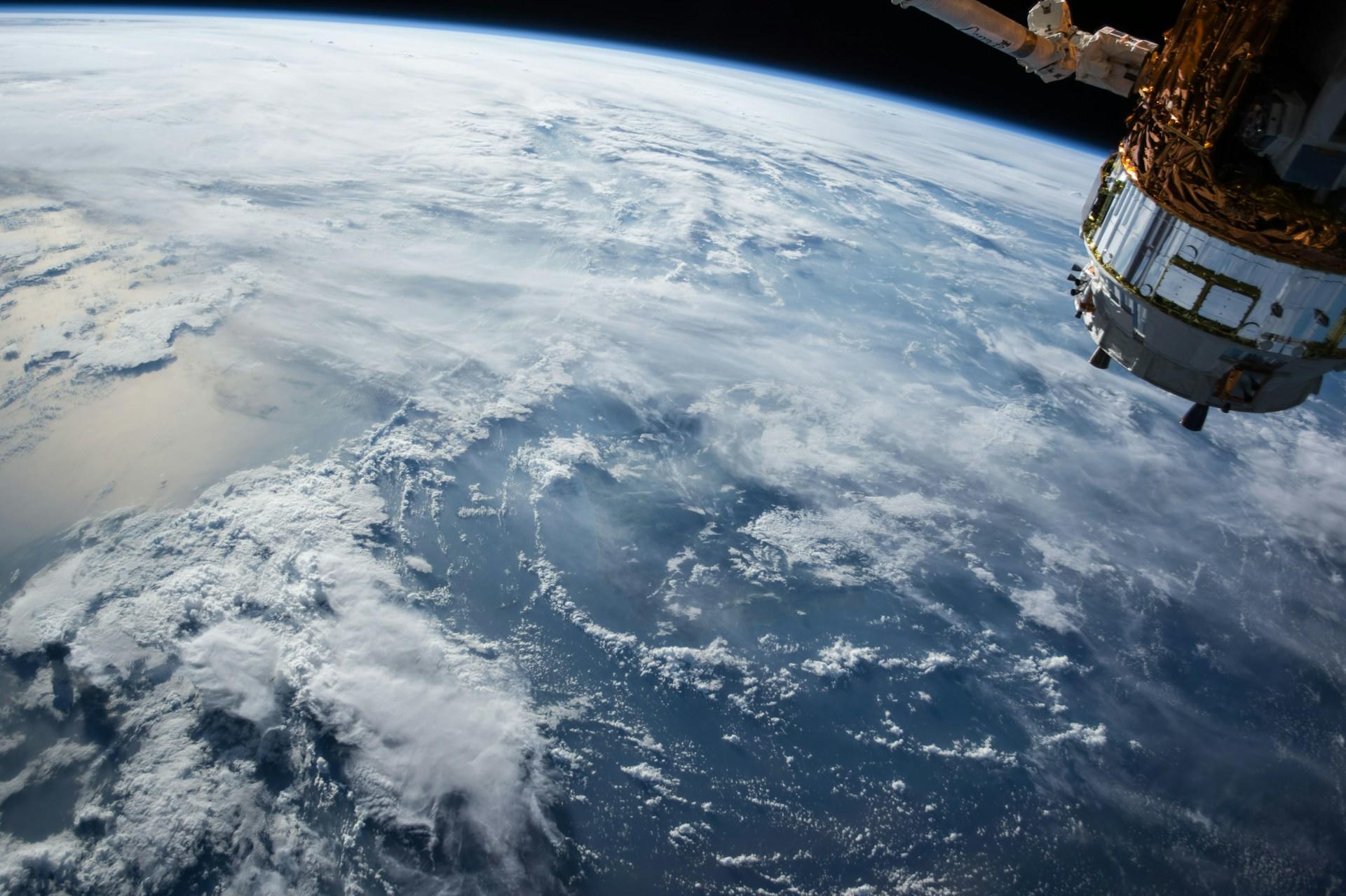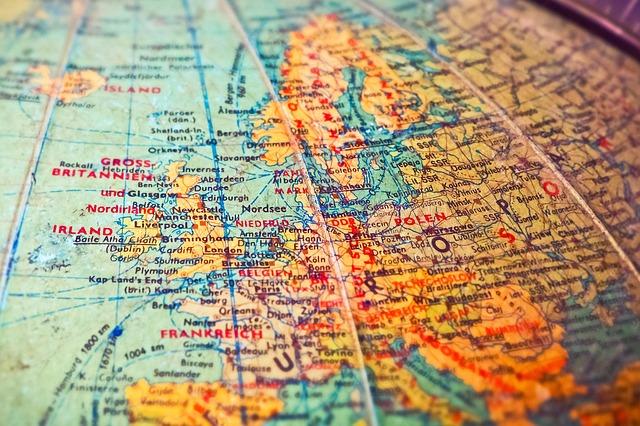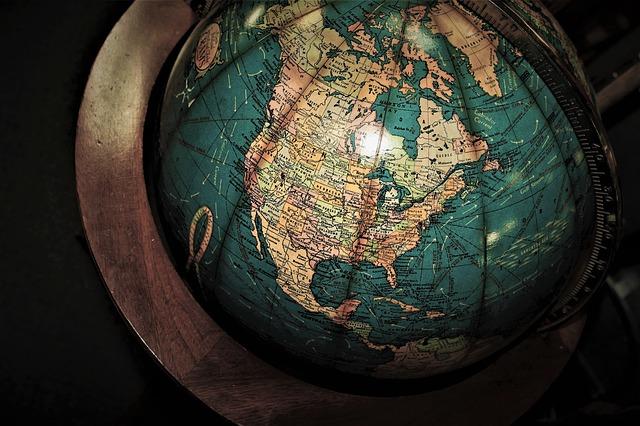Earth is an amazing place to be! It’s the only planet we know of that can support life and there are a million interesting things to be found around the globe to boot!
Every year on 22 April, we celebrate Earth Day and the remarkable planet we inhabit. Established in 1970, Earth Day aims to highlight our planet's environmental challenges and raise awareness of the importance of protecting our world for future generations. However, shouldn't we treat every day as Earth Day? After all, we have only one beautiful planet. Here is a curated list of 10 remarkable facts about Earth.
Here are some amazing facts about the Earth you may not have known before!

The Earth is Not Round
Most people say the Earth is a sphere, but it’s an ellipsoid shape, more specifically, an oblate spheroid. But even that’s not exactly true! Because of the irregular surface shape of Earth, scientists have come up with a theoretical shape to use for calculations called a geoid, which is an undulating shape made up of the mean sea-level measurements.
The reason for Earth’s non-spherical shape is centrifugal force. Due to the Earth’s rapid rotation (1670 km/hr at the equator), the Earth’s structure bulges by about 20.1 km at the equator.
The Earth's diameter measures 12,714 kilometers (7,900 miles) from the North to the South Pole, and 12,756 kilometers (7,926 miles) through the equator, a difference of 42.78 kilometers (26.58 miles).
While we don’t notice these details in our everyday lives, these factors all play a part in how the Earth functions.
Your Map is Probably Misleading You
Did you know that the most common map in the world, the Mercator projection, doesn’t show the continents correctly?
It’s impossible to flatten a sphere (or oblate spheroid) into a tidy, rectangular map shape. So, for the sake of convenience and less confusion, most people have been taught about geography using an inaccurate projection.
The Mercator projection, developed by Gerardus Mercator in 1569, is a cylindrical map projection that preserves angles, making it useful for navigation.
The Mercator map shows the areas along the equator at or close to real scale, but the areas farther away from the Equator are artificially enlarged. The result is that most of the world thinks that Greenland is enormous and that Africa is about the same size as North and South America.
In reality, Africa is enormous, and Greenland is very, very small.
More accurate maps to look at include AuthaGraph, Goode’s Homolosine, the Sinu-Mollweide projection, and the Dymaxion (aka Fuller) projection.
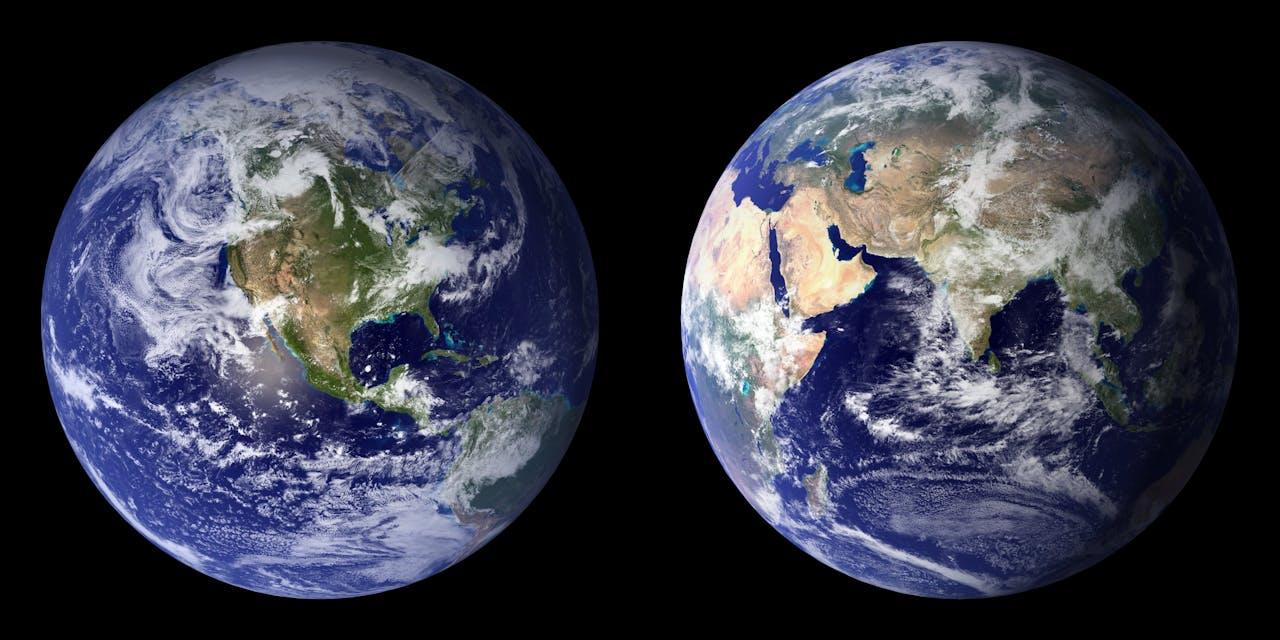
A Year is Not 365 Days
One of the most interesting facts about the world is that our time system doesn’t exactly match with real life!
We say that each day is exactly 24 hours, but in reality, it’s 23.262222 hours.
Also, it doesn’t take exactly 365 days to orbit the sun (complete one year), although that’s what we say it does in our calendars. It takes 365.242190 days (365 days, 5 hours, 48 minutes, 56 seconds).
And that's why we have Leap Years! If we didn’t add a day in once every four years, our seasons would appear to gradually shift, eventually becoming exactly opposite what they are now (think December weather in July) and then shift back, in a never-ending cycle.
To avoid this chaos, we add 24 hours to our year once every 4 years to get back on track.
If you do the math, you’ll see that adding a day once every 4 years actually ends up giving us too much extra time back. To solve this issue, Leap Day is skipped once every so often. The way to determine a skip year is that if the number of the year is divisible by 100 and not divisible by 400, then the year is skipped.
There is More Saltwater than Freshwater
While 71% of the Earth’s surface is covered in water, only 3% of the water is freshwater!
The rest is saltwater.
If all of Earth's water were condensed into a single sphere, its diameter would be approximately 860 miles (1,385 kilometers), slightly more than the distance between Salt Lake City, Utah, and Topeka, Kansas.
The total volume of this water sphere would be around 332.5 million cubic miles (1,386 million cubic kilometers). One cubic mile of water equals over 1.1 trillion gallons, while one cubic kilometer of water equals about 264 billion gallons (1 trillion liters).
Additionally, of the 3% freshwater, 70% of it is contained just within Antarctica, and of that, 90% of it is ice!
Only 0.009% of freshwater is found in lakes, and only 0.0001% is found in rivers, even though there are millions and millions of miles of rivers and streams all over the world. The United States alone has about 3.5 million miles of rivers!
Furthermore, there are an estimated 3.785 trillion liters of water on Earth.
It seems to me that the natural world is the great source of excitement: the greatest source of visual beauty; the greatest source of intellectual interest. It is the greatest source of so much in life that makes life worth living.
David Attenborough
Earth is Way Less Smooth Than You Think
You already know Earth is a bulging shape, but did you know the surface of the Earth is far more dynamic than anyone can see? There are deep trenches and mountain ranges beneath the oceans, hiding just how pitted and lumpy the Earth really is. We tend to think of it as smooth because the seawater hides all these crevices.
The tallest mountain on Earth (Mount Everest) is 8,849 meters tall (measured from sea level). The deepest place in the ocean is the Mariana Trench, which is about 10,984 meters deep (also measured from sea level).
This means that, in total, the difference between the most “innie” and “outie” points on Earth is about 19,833 meters! And remember, there are many other mountains dotting the globe, contributing to its unique topography.
The Mariana Trench is so deep that the water pressure is 1086 bars (15,750 psi aka 8 tons per square inch), no light from the sun ever shines there, and the temperature is always just a few degrees above freezing. It’s so difficult to get to the bottom of the trench that only two voyages have ever been made (in 1960 and 2012), and only 3 people have ever seen the bottom with their own eyes. Incredibly, they found life there! We have more detailed maps of the moon and Mars than of the ocean as a whole.

The Continents Are Moving Right Now
Did you know that most of the Earth’s crust is made of tectonic plates and that they are slowly drifting around on top of a layer of molten hot rocks and minerals?
Since the dawn of the Earth, the landmasses have been drifting around all over the Earth’s surface, breaking apart and coming together at least three times over the past 4.5 billion years.
We know that there used to be a supercontinent called Pangaea which existed around 200 million years ago. You can see how the continents we know today fit together like a puzzle!
It’s not a perfect puzzle because of things like erosion, volcanic activity, and other factors that may change the shape of a continent slightly over time.
Today, the continents are still drifting at a rate of about 3 to 5 cm per year. The movement of the tectonic plates is also responsible for many phenomena like volcanoes, earthquakes, and tsunamis.
The Earth is Made of Layers
Five general layers make up the Earth
Crust: The outer layer where we live. On land, it’s about 30 km thick. In the ocean, it’s about 8 to 10 km thick.
Outer Mantle: The liquid rock just below the crust that the tectonic plates glide across. This is the substance that comes out of volcanoes. Some parts of the outer mantle are liquid and others are solid. Temperatures can range from 1,400°C – 3,000°C.
Inner Mantle: Interestingly, even though this layer is hotter, it is solid because of the amount of pressure on it – the metal doesn’t have room to melt! The temperature is about 3,000°C.
Outer Core: This layer is made of liquid metals that are about 4,000°C – 6,000°C at all times. Their movement creates Earth’s magnetic fields!
Inner Core: Again, there is so much pressure that the iron core remains solid even though it should be melted! The temperature is 5,000°C to 6,000°C.
Earth Supports Billions of Lifeforms
There are about 8.7 million different types of animals on Earth right now, and about 380,000 different types of plants.
Of these animals (which includes all the categories like insects, reptiles, amphibians, birds, and mammals), only about 1.2 million of them have been described.
It’s impossible to know exactly how many animals are living on Earth right now, but the estimate is generally 20,000,121,091,000,000,000.
This can be written as 20 quintillion, or 20 billion billion, and this figure was given in 2019 by Brian Tomasik, who is a mathematician, computer science expert and animal rights advocate.
Of this number, there are about 8.1 billion humans on Earth right now!
The Moon Is Slowly Drifting Away
Due to the forces of gravity, centrifugal force, and inertia, the Earth and the moon have an interesting physics relationship. The moon’s gravity influences the tides, and the rotation of the Earth creates that bulge. Both these forces in turn cause the moon to accelerate in space. This acceleration causes the moon to drift away from the Earth at the astounding rate of about 4 cm per year.
While these changes aren’t apparent on a day-to-day basis, it implies that someday, the moon could escape Earth’s gravitational pull and/or change Earth’s rotation. But don’t worry, that won’t happen for about 5-10 billion years. Plus, the sun will likely die before that can happen anyway, in about 7 to 8 billion years.
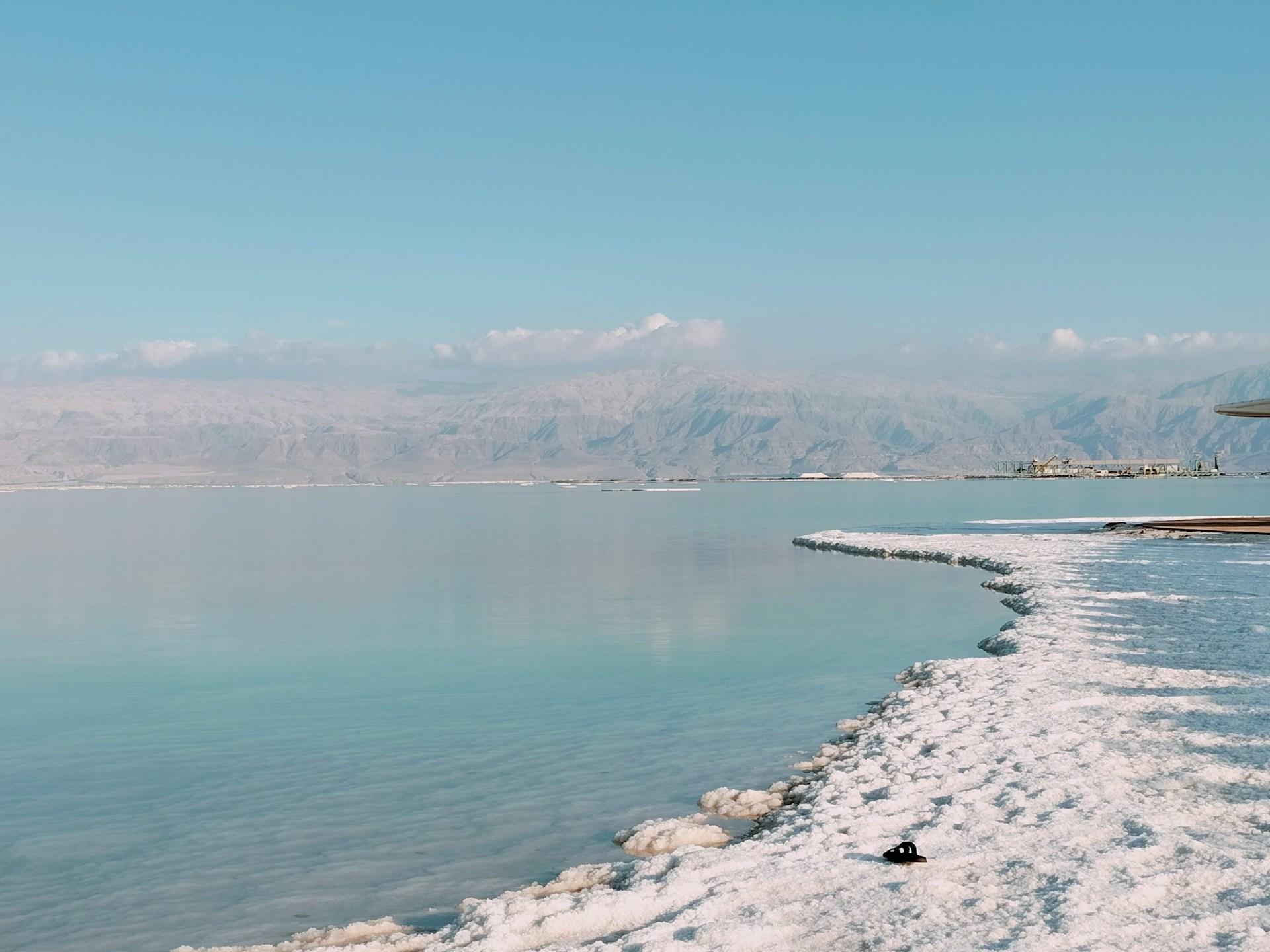
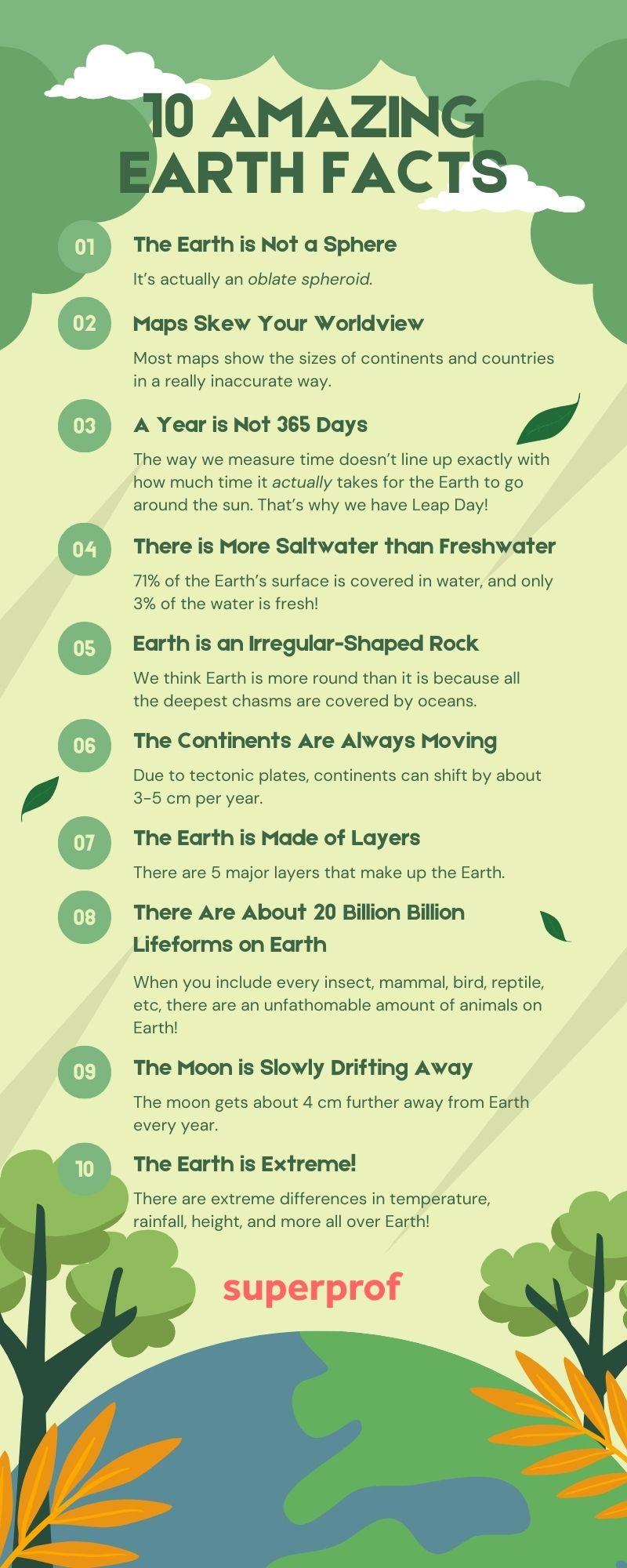
Extreme Climates
Here are some fun facts about different places on Earth!
Highest place on Earth: Mount Everest, Nepal/Tibet, 8,849 meters above sea level
Lowest place on Earth: Challenger Deep, Mariana Trench, Pacific Ocean seafloor, 10,984 meters below sea level
Lowest place on land: the Dead Sea, Israel/Jordan, 420 meters below sea level
The driest place on Earth (non-polar): the Atacama Desert, Chile, 0.0762 cm of rain per year
Wettest place on Earth: Mawsynram, Meghalaya, India, 1187.1 cm of rain per year
Hottest place on Earth: Death Valley, California, USA, 56.7°C record high air temperature, 45°C average daily air temperature (record ground temp was 93.9 °C!)
Coldest place on Earth: East Antarctic Plateau, Antarctica, - 93.2°C record low ground temperature
Bonus Interesting Things About Earth
Days are getting longer
The length of Earth's day is increasing. When Earth was formed 4.6 billion years ago, its day would have been roughly six hours long.
By 620 million years ago, this had increased to 21.9 hours. Today, the average day is 24 hours long, but is increasing by about 1.7 milliseconds every century. The reason is that the moon is slowing down Earth's rotation through the tides that it helps create. Earth's spin causes the position of its tidal ocean bulges to be pulled slightly ahead of the moon-Earth axis, which creates a twisting force that slows down Earth's rotation. As a result, our day is getting longer — but not long enough to make a difference to your busy schedule.
3753 Cruithne - Moon's Friend?
Discovered in 1986, 3753 Cruithne is an asteroid that orbits the sun, taking the same amount of time as Earth. From Earth's perspective, its orbit appears bean-shaped. Asteroid 2002 AA 29 also orbits the sun once a year, following a more bizarre horseshoe-shaped path that brings it close to Earth every 95 years. Scientists have suggested collecting samples from AA 29 and bringing them back to Earth due to its proximity.
Ice Age
About 600-800 million years ago, Earth experienced several severe climate shifts known as ice ages. The climate became so frigid that some scientists believe Earth nearly or entirely froze over multiple times, a phenomenon referred to as the "snowball Earth" theory.
Did you learn anything new today?
References
- Astronomy.com https://www.astronomy.com/science/earths-equatorial-bulge-shapes-the-planets-physics/
- Smithsonian Air and Space Museum https://airandspace.si.edu/stories/editorial/science-leap-year
- European Space Agency https://www.esa.int/Applications/Observing_the_Earth/10_remarkable_Earth_facts
- US Bureau of Reclamation https://www.usbr.gov/mp/arwec/water-facts-ww-water-sup.html
- National Geographic, Deep Sea Challenge https://deepseachallenge.com/the-expedition/the-mariana-trench/
- Reducing-Suffering.org https://reducing-suffering.org/how-many-wild-animals-are-there/
- National Geographic https://www.nationalgeographic.com/science/article/plate-tectonics
- American Museum of Natural History https://www.amnh.org/explore/ology/earth/power-of-plate-tectonics/pangaea
- National Geographic Kids https://www.natgeokids.com/uk/discover/geography/physical-geography/structure-of-the-earth/
- NASA https://science.nasa.gov/earth/facts/

